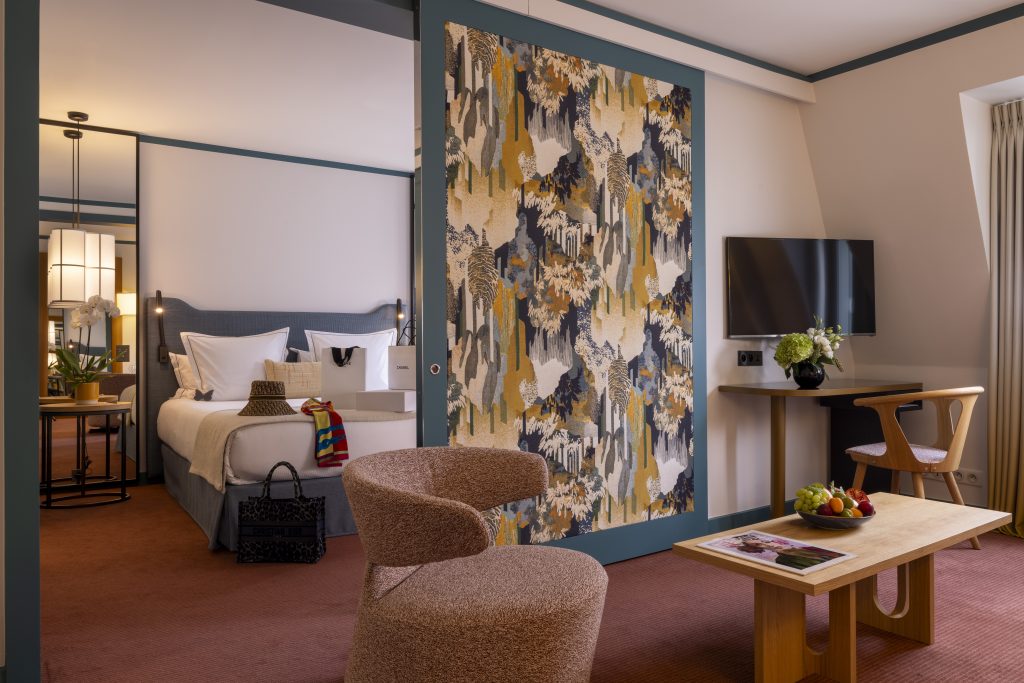Zevs at the W Paris: Opéra
The infamous French artist creates an invisible installation of his dripping logos at the newest W Hotel

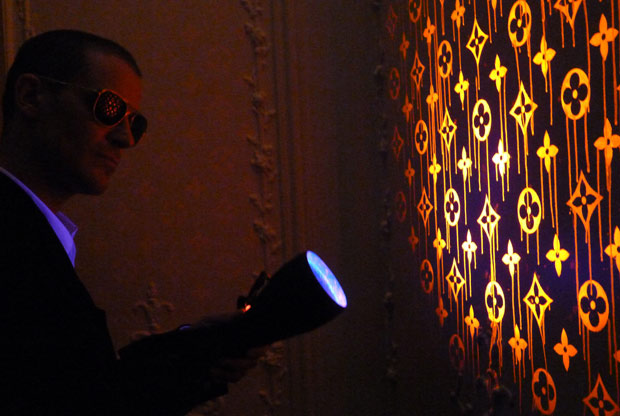
To celebrate the opening of their newest property, the W Paris Opéra, W Hotels brought in the best of young European artistic talent to interpret the spirit of their city. French artist ShoboShobo created a series of characters exercising with macarons, baguettes and wine props to decorate the hotel gym, while Dutch photographer Marcel van der Vlugt reinterpreted French icons into modern portraits of Paul Gauguin, the Marquis de Sade, Marie Antoinette and Louis Daguerre on pillows in each room.
However, not all of the installations are visible to the naked eye. Guests checking in to Suite 112 at the hotel are in for a special surprise that can only be seen with UV light. French artist Zevs, brought his trademark vision to the hotel with new work that is once again exploring not what is seen, but what is left to the imagination.

For the Suite 112 installation, Zevs worked with invisible ink that he created in a laboratory in New York City, mimicking the special red pigment used by police at crime scenes. “This red reminds you of the blood of a crime scene, but it’s also the most visible color, so I like the extreme aspect between the invisibility of the ink and the extreme visibility of the color,” he says.
We caught up with the artist at the opening night party, where a man dressed as a CSI expert shone a UV light slowly over the walls to reveal patterned Louis Vuitton wallpaper with Zevs’ signature dripping logos. “With the idea to place logos into a crime scene, I think simply the idea is to continue to investigate the territory of this fashion victim project I did last year,” he says, referring to a Sao Paolo Fashion Week event in which a naked model was “murdered” by a Louis Vuitton logo and Zevs outlined her body on the street in chalk.
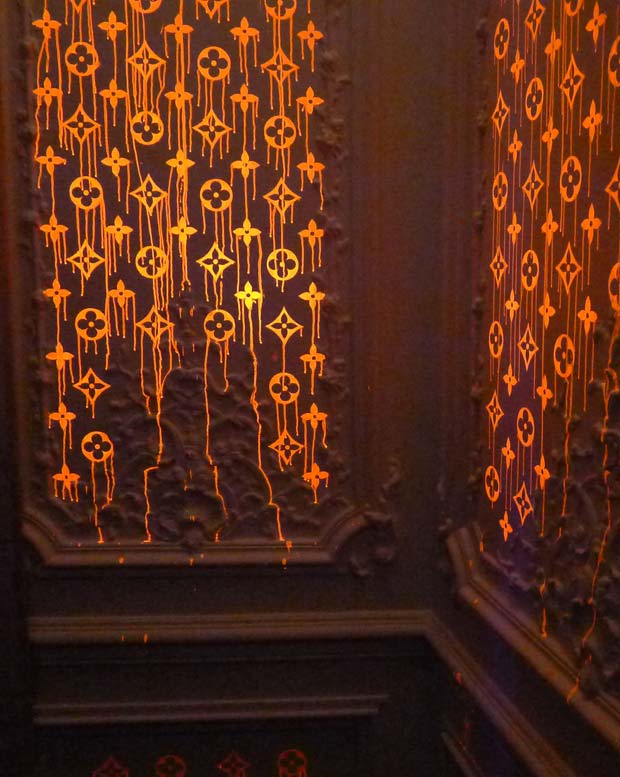
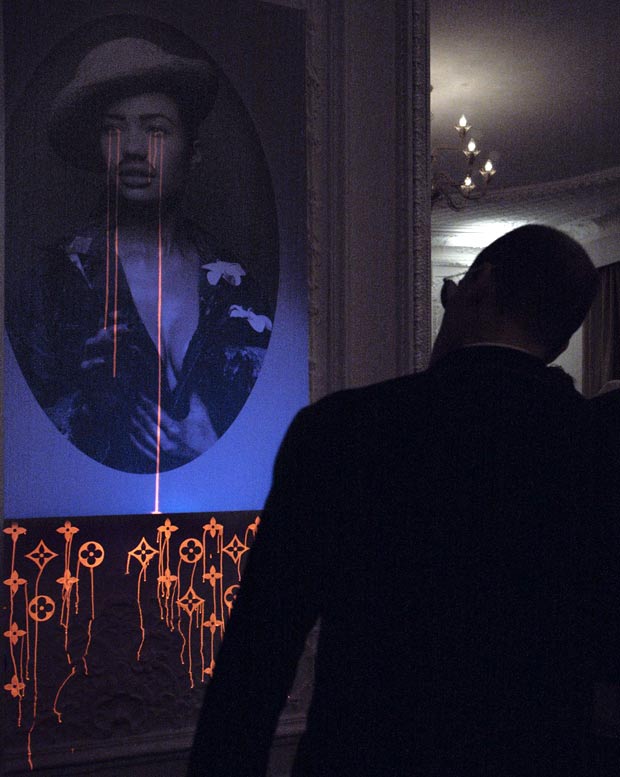
Zevs works with existing objects, often in the advertising world and often playing on art and crime, adding a simple twist to make a big impact on passersby. In his infamous “Visual Kidnapping” piece, he demanded ransom after cutting out a giant image of a girl from a Lavazza billboard in Berlin. The stunt ended up netting a donation of half a million euros from the brand to the contemporary Parisian art institution Palais de Tokyo.
He began his “Visual Attacks” in the 1990s, painting advertisements as though they’d been hit by a bullet. The “Electric Shadows” series explored the idea of revealing the invisible by painting temporal shadows into permanent sidewalk fixtures. His “Liquidated Logos” work trademarked his drip technique to make any logo dissolve before the viewer’s eyes.
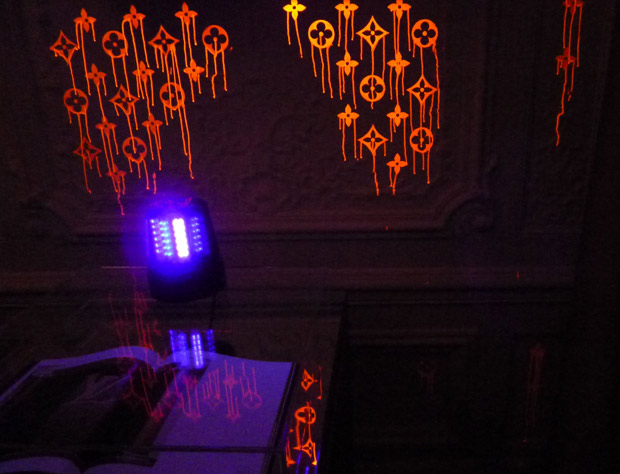
This summer in Paris, Zevs will reinvent his “Proper Graffiti” series, a technique he perfected in France in the ’90s, in which he erases existing graffiti to reveal a new fresco on a city wall.
Zevs’ playful use of logos is not so much an anti-branding message as a hint to onlookers to reexamine how they view and interact with logos so that it’s not such a passive relationship. Each invisible spot on the wall took on a new meaning when revealed at the Paris opening, as guests began to feel like investigators discovering essential clues in a case. Zevs also painted into van der Vlugt’s photographs, creating an eery aura throughout the room.
W Paris Opéra
4 rue Meyerbeer
75009 Paris

